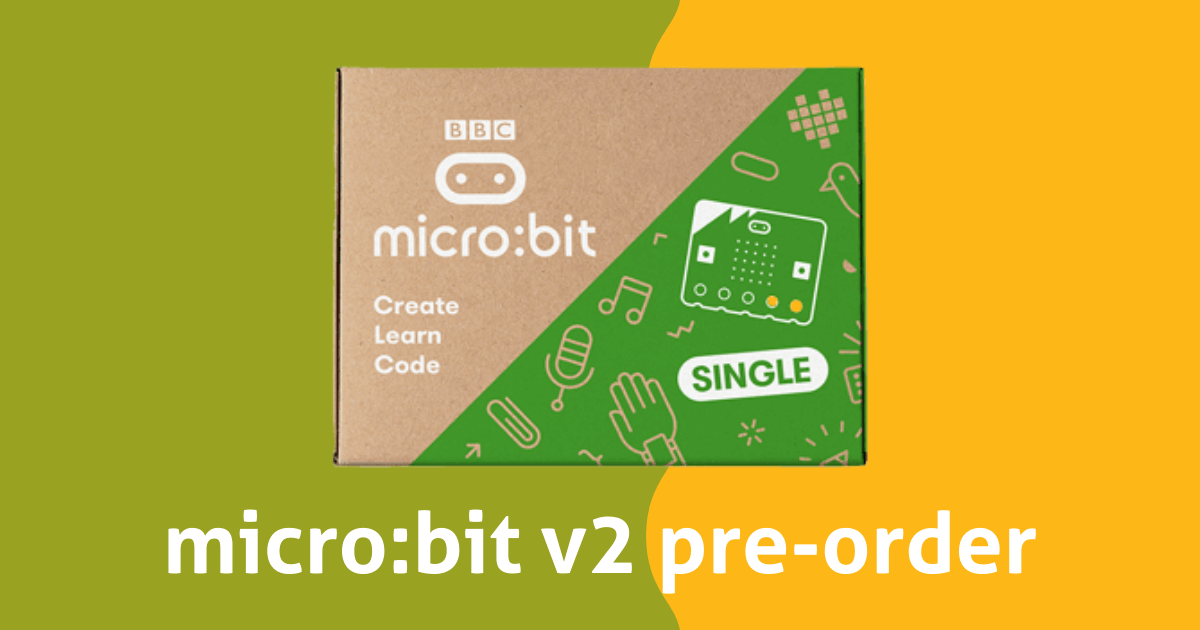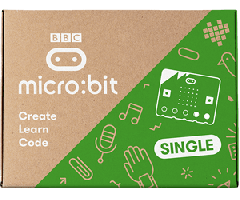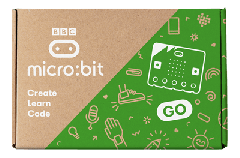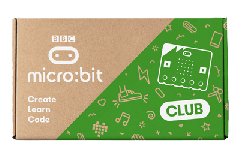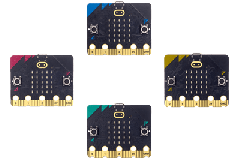There will soon be a new and improved way for students to code. A new version of the wildly popular micro:bit is on the horizon—the micro:bit V2! When it first showed up on the education scene a few years ago, the micro:bit became an instant favorite among STEAM teachers around the world thanks to its pocket-sized portability and simplicity when it came to teaching coding. It was so popular in fact that many EdTech and general technology manufacturers began incorporating micro:bit connectivity in new products and devices, providing students and hackers with even more ways to program. Come December, when the micro:bit V2 starts shipping, it could help launch another revolution in STEM education.
The biggest improvements to the new micro:bit compared to the original version involve a built-in speaker, a built-in microphone, and a touch sensitive logo on the surface of the board as well as increased processing power. At the moment, the micro:bit V2 kits are available for pre-order and will begin shipping this December. There are four kit options in total: the micro:bit V2 Single, micro:bit V2 Go, micro:bit V2 Club Pack (10 micro:bit V2 units), and the 300-unit micro:bit V2 Bulk Box. And, as for coding, it connects to computers for creating programs using MakeCode, Python, or Scratch!
To stay affordable, this micro:bit is the same price as the previous model, but adds more flexibility. The single unit micro:bit V2 is $20.00 while the micro:bit V2 Go is $21.00. With the new speaker that’s built in to the micro:bit, students will be able to make their own sounds and bring their micro:bit to life. Plus, with the microphone that’s now a part of the board, they’ll be able to use their micro:bit to sense sounds and transform projects in an entirely new way. The micro:bit V2 also features some other upgrades for convenience. There is an easier way to power it off—pushing and holding down the power button. Also, its new power saving mode helps conserve energy.
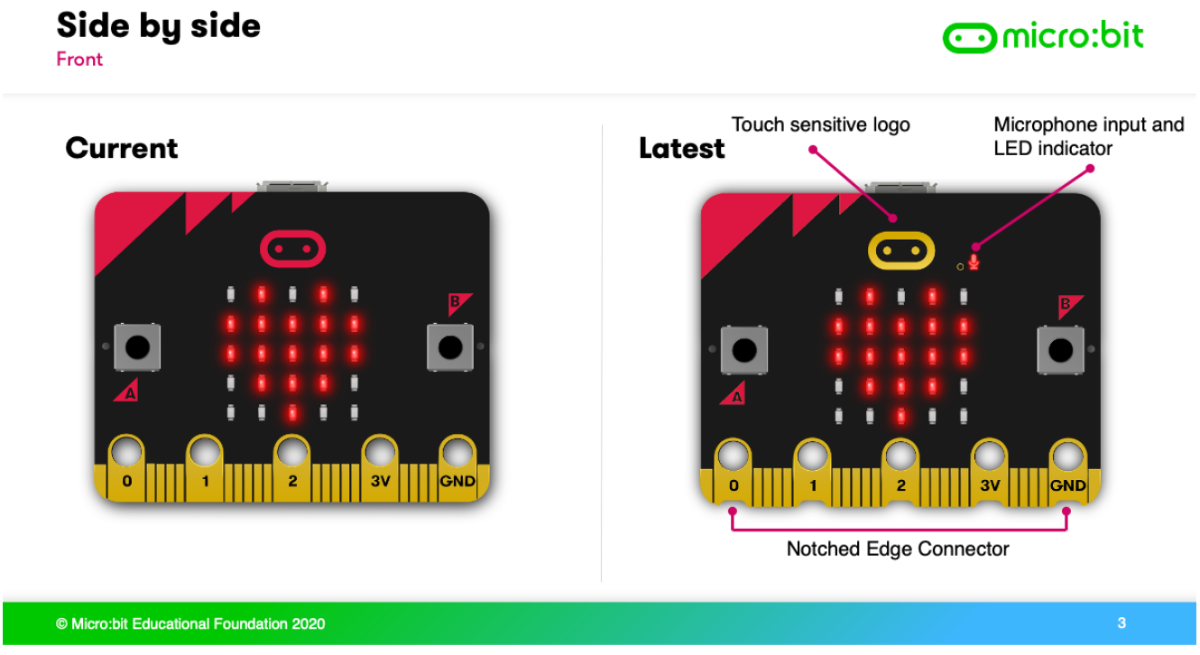
The brilliance of the new sound sensing capabilities allows students to incorporate sound in engineering and coding projects without the need to attach another device to their micro:bit. The sensor allows them make the micro:bit’s LEDs light up by clapping their hands, for example. Beyond its sound applications, the micro:bit V2 features an accelerometer and magnetometer. This helps make it possible for it to tell which direction you’re moving as well as detecting motion. As for the touch sensitive logo, it's found on the front of the new micro:bit. Students can program it to respond to touch, bringing new elements of interactivity to coding with the micro:bit!
Beyond that, the micro:bit V2 has a built-in temperature sensor, light sensor, and two programmable buttons. Students can use these buttons as a game controller, control music that’s playing on a smartphone, and more. On the board, the edge connector houses 25 pins, which students can connect to crocodile clips and other inputs. This will allow the micro:bit to read values from sensors and control motors and robots. The original micro:bit was already compatible with a bunch of different STEAM tools, like littleBits, the Sphero RVR, and GiggleBot, and the opportunities for in-depth experimenting and inventing will certainly continue with the V2!
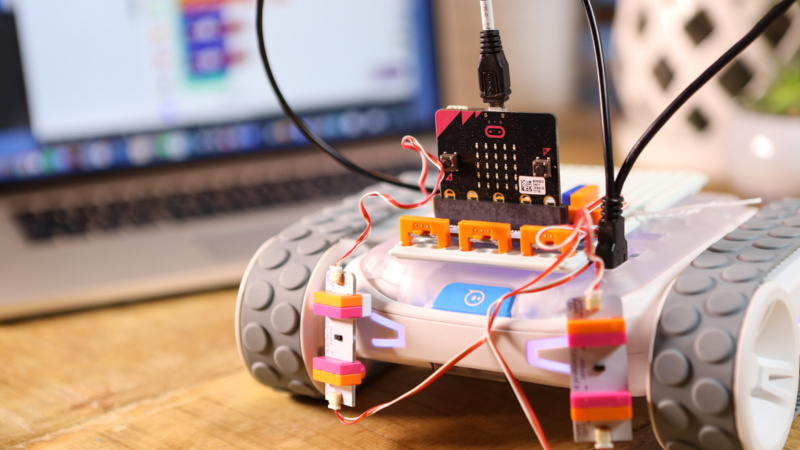
The new micro:bit will be similar in size as the previous model. It will measure 5 cm X 4 cm and weigh about eight grams. It’s equipped with a 5V micro USB power port and features an LED power indicator. The 5X5 LED matrix features 25 red LED lights that are each individually programmable. Students can program them to display animated patterns, scrolling text, and alphanumeric characters. Beyond that, the 25 external connector pins are used in programming motors, LEDs, and other electrical components. Oh, and if you’d like to use the micro:bit V2 with Swift Playgrounds or Scratch, it connects via Bluetooth.
As you can see, there is so much that students will be able to do with the impressive micro:bit V2! It’s very much aligned with the existing micro:bit experience and easily compatible with micro:bit Classroom. This is great because educators and students can work on coding projects remotely! The micro:bit V2 is scheduled to start shipping in December 2020, so get your pre-orders in early! The single packs, Club Pack, and Bulk Box can all be found on our store as well as below! If you have any questions, feel free to contact us and be sure to follow on Twitter and Instagram.



